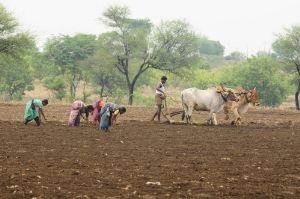July 30, 2013
Still-smouldering protests from Egypt to Brazil have set off a race among scholars to identify the roots of this summer of discontent in the emerging world. Each major theory starts at the bottom, with the protesters on the street, and notes a common thread: young, Twittersavvy members of a rising middle class.

July 30, 2013
Still-smouldering protests from Egypt to Brazil have set off a race among scholars to identify the roots of this summer of discontent in the emerging world. Each major theory starts at the bottom, with the protesters on the street, and notes a common thread: young, Twittersavvy members of a rising middle class.

In this telling, the protests represent the perils of success, as growing wealth creates a class of people who have the time and financial wherewithal to demand from their leaders even more prosperity, and political freedom as well.
This is a plausible story. Yet it is a bit too familiar to be fully persuasive. The middle class has indeed been at the vanguard of protests since the French Revolution. It has played an important role in Turkey, Brazil and Egypt. But bourgeois rage can only explain so much. The middle class has been rising for many decades; in the last 10 years, rapid economic growth has spread with rare uniformity across most nations in the emerging world.
So why are protests erupting now, and in only a scattered selection of emerging countries?
LOOK AT THE HALLS OF POWER
The middle class was not rising particularly fast in the countries recently hit by protests. According to data from the Brookings Institution, in 20 of the largest emerging nations, the middle class has grown over the last 15 years by an average of 18 percentage points to comprise a bit more than half the population.
Brookings defines "middle class" individuals as those who can spend $10 to $100 a day, which should capture all the people who are newly ready to mobilise in protest. However, since 2010, protests have broken out in countries where the Brookings data identify the middle class as growing most rapidly, such as Russia, and least rapidly, such as India.
The biggest protests have struck in countries where growth of the middle class is near the average: Egypt (14%), Brazil (19%), Turkey (22%). Maybe the place to start searching for a common thread is not in the streets but in the halls of power. Among the 20 largest emerging nations, the ruling party has now been in power for slightly more than eight years on average, or roughly double the average 10 years ago.
Of the nine countries where the ruling party has held office for longer than eight years, there have been significant protests targeting the leadership in at least six: Argentina, Brazil, Turkey, Russia, South Africa, and India.
Of the 11 countries in which the ruling party has been in office for less than eight years, there have been major protests in only one: Egypt. And in Egypt, liberals protested against the Muslim Brotherhood for bringing back the economic stagnation and political autocracy of the previous leadership – in essence, a revolt against the character of the old dictatorship.
Now, with Islamists challenging the military "coup," the middle class feels caught in the same conflict that has long haunted Egypt. These are revolts against the ancient regimes, revealing the peril of staying in power too long.
LOST HEROES
It's not clear why so many older regimes are in power now, but the last decade was a great one for emerging economies, with rapid growth in virtually all 150 developing countries.
That gave many ruling parties the momentum to stay in office. Today, as growth slows, people are losing patience with leaders who are not adapting to a tough post-crisis world. In Brazil, the Workers' Party has been in power for 10 years, and under Dilma Rousseff follows the statist approach to development set by her predecessor. Similarly, in Russia, protests erupted in 2011 and 2012 against Putin and his party.
In Turkey, the issue is the overconfidence of a ruling party that is pushing the same model that has produced strong growth for the last 10 years. In South Africa, the mine strikes that flared in 2010 remain a threat to the 20-year reign of the ANC.
In India, protests against corruption and mishandled rape cases have given voice to frustrations with the nine-year rule of the UPA. The potential for these protests to reignite depends, at least in part, on whether people have the power to change old regimes. In genuine multiparty democracies such as India and Brazil, coming elections provide that opportunity.
But in Russia and South Africa, where there is no clear alternative to the ruling regime, the risk of protests recurring is greater. Meanwhile, new regimes are getting a free pass from the rising middle class. In Mexico, the Philippines and even Pakistan, relatively fresh leaders are using their political capital to push needed reforms.
In these countries, the young and the newly prosperous are, for now, content to watch politics unfold on TV.
Courtesy: Bloomberg
















































































































